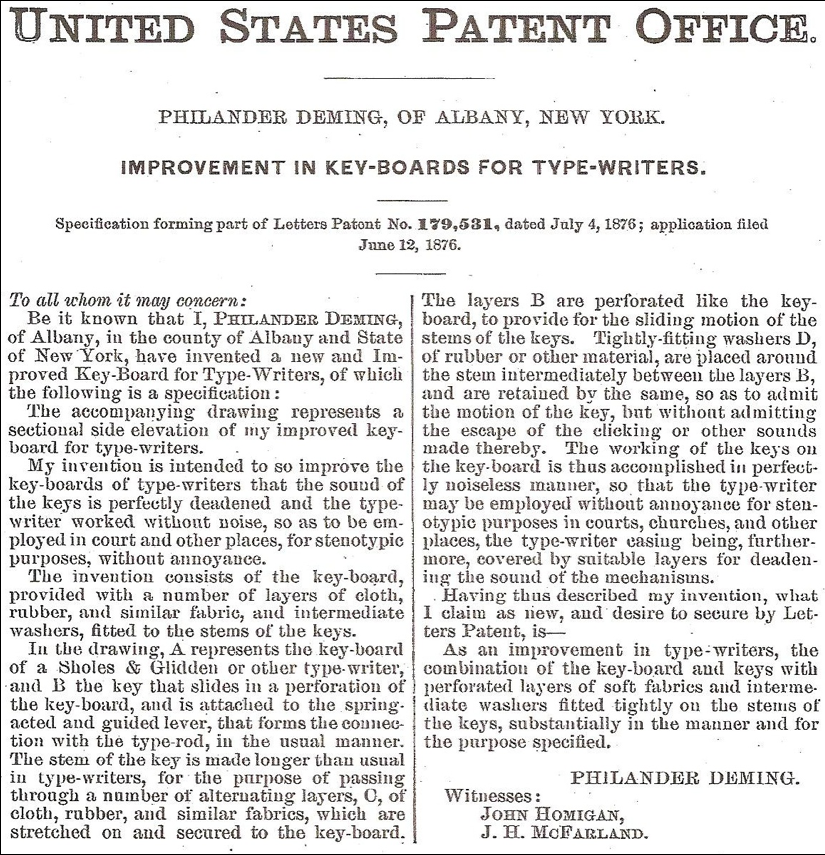
No one could say he wasn’t an innovator. In the 1870s, Albany’s Philander Deming, father of court stenography, saw the possibilities arising from the newfangled writing machines known as type-writers. He didn’t invent his own, but set out to improve the Sholes and Glidden machine in order to make it as quiet as possible so as to be suitable for use in courtrooms.
Part of it was through softening the key-tops, which on manual typewriters struck with a substantial metallic sound. Deming covered the keyboard base with cloth and rubber, and attached washers to the key stems in order to dampen the noise. He also came up with a glass and fabric case in which to use the type-writer, in order to further quiet its workings.
Deming also adapted the keyboard. In the early days, the QWERTY arrangement we’ve come to know and puzzle over was but one of many options, and not one he thought best suited to stenographic applications. Interestingly, given that Deming was a champion of shorthand, what he invented was not a shorthand typewriter. Instead, he tried to arrange the keys with capitals on the left and lower-case letters on the right, “the most frequently used letters being arranged in front or middle, so as to be most convenient for the hands in working the keyboard”. The second row was QWERTZ, but the first row was KOIPL. Most importantly, he omitted the space bar, intending sentences to be separated by punctuation, in order to speed the process.
For an extraordinarily thorough look at Philander Deming’s typewriter patents, take a look at this entry at Oztypewriter.

Leave a Reply